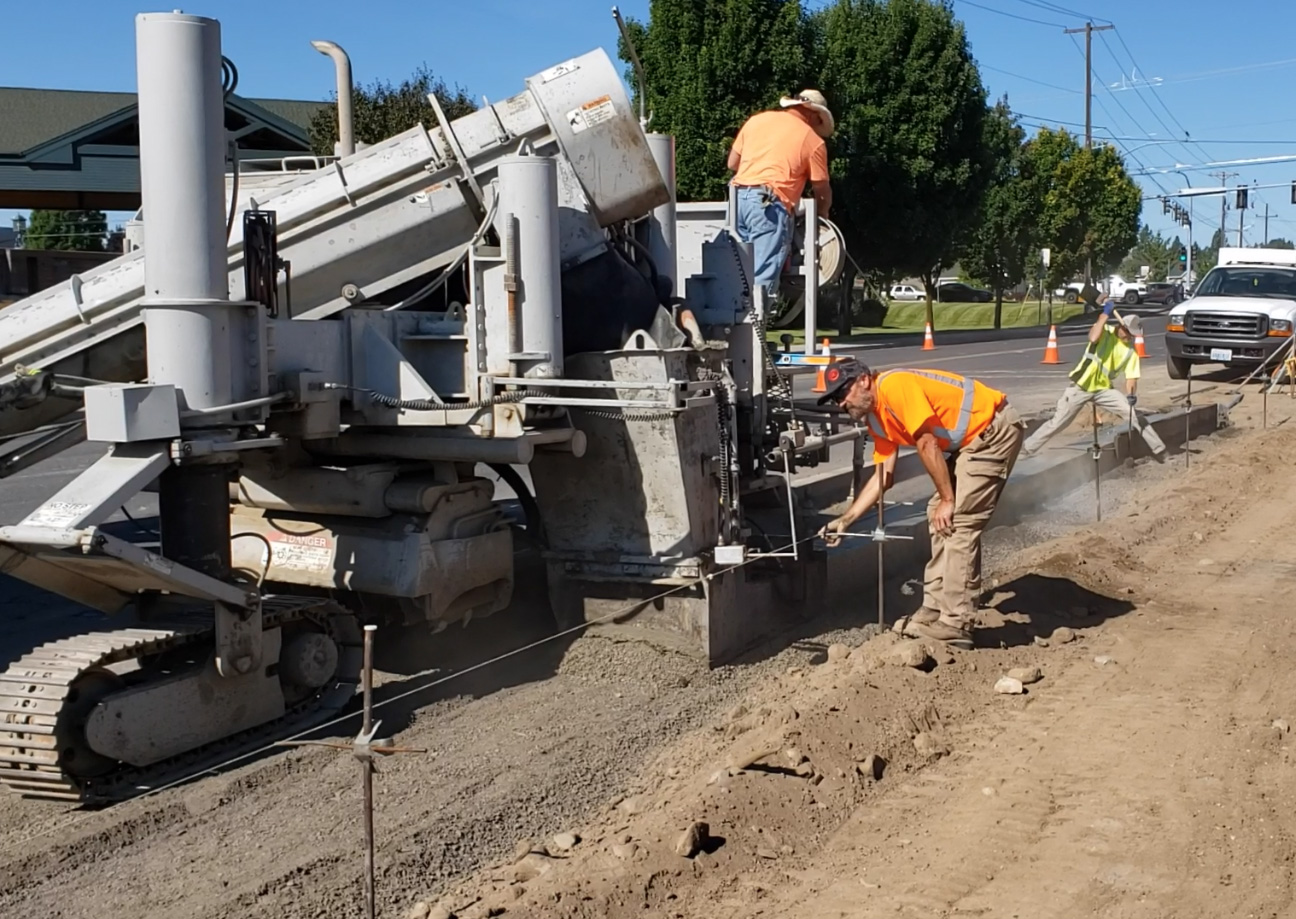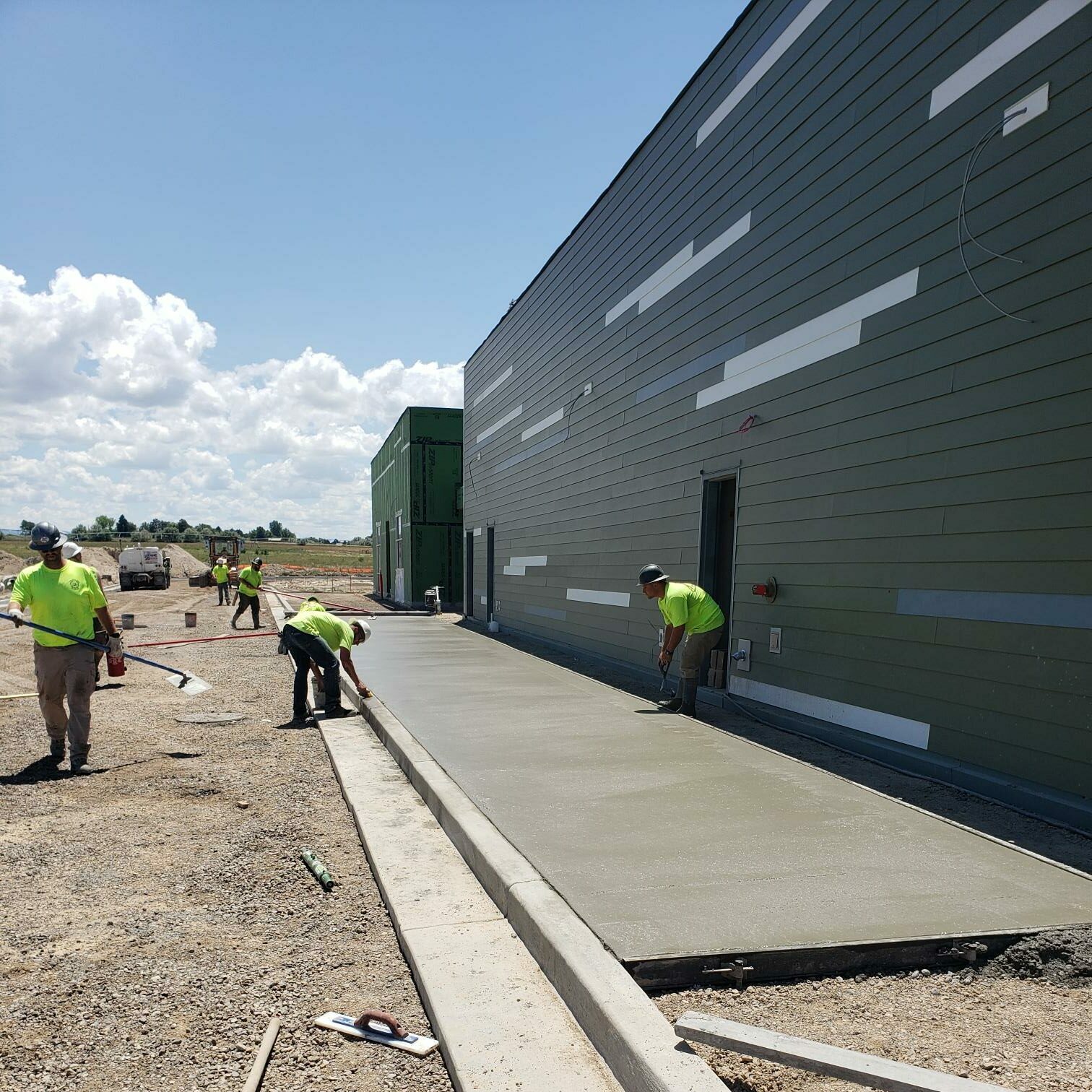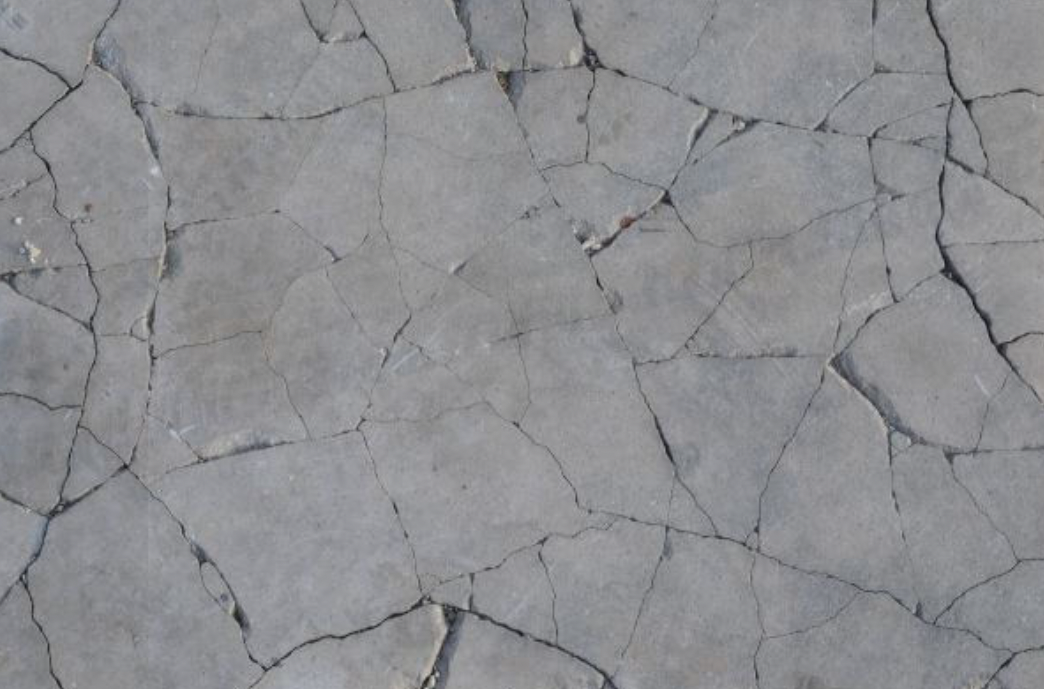concrete
CURB & GUTTER
There are many different types of curbs and gutters in use for light and heavy-duty pavements. Their main purpose is to channel water to drains, eliminating the need for side ditches and improving pavement performance by preventing surface water from getting beneath the pavement. In some cases, curbs may also serve as barriers to prevent vehicles from running off the road, but in urban areas a rolled curb has certain advantages. It allows a disabled vehicle to move out of the travel lane and permits the driver to more readily control his vehicle when operating next to a median.
Regardless of whether slip-forming machines or stationary forms are used, careful attention must be given to preparing the sub-grade, placing reinforcement when needed, jointing and finishing. The sub-grade must be leveled to the properly, compacted and moistened prior to concrete placement. In poor soil areas a granular base may be required. Failure to adhere to good construction practices may result in a curb and gutter that settles, tilts or cracks.
The amount of hand finishing required for curb and gutter construction varies considerably. When stationary forms are used the exposed concrete surfaces must be floated. Slip-forming eliminates the need for hand floating. Also, depending on the curb and gutter cross - section specified, it may be necessary to hand tool a radius into the curb face. This hand tooling may be essential even when a slipform paver is used. Joints can be tooled into the curb and gutter, thus avoiding the waiting time required for saw cutting. After jointing, a broom finish can be applied to produce a nonslip surface.


CONCRETE FLATWORK
Not all concrete flatwork is created equal. This is true of both its structural integrity and decorative function. Premium quality concrete requires precisely mixing aggregates, rapid delivery to ensure proper curing, and delicate application techniques to achieve a durable finish. Various methods will produce different kinds of finishing. Smoother finishes should be saved for indoors. Smooth concrete can be slippery when wet. Brush-textured concrete is better for exterior flatwork.
There is more to finishing than just strength and safety, though. Decorative concrete contractors can use this finishing process to help them create all kinds of interesting, warm, and inviting effects with concrete. But your concrete driveway can be finished and dyed to look like a stone driveway. Your neighbors will not believe it’s concrete.
Using concrete stains or dyes, we can make your concrete flatwork look like almost any material, including your basement floor to look like hardwood. Given that below-grade hardwood flooring is a big no-no, many homeowners find their way to decorative concrete for their basement floor. While staining can be significant, you may find it to be a worthy investment.
Concrete Laser Screed

